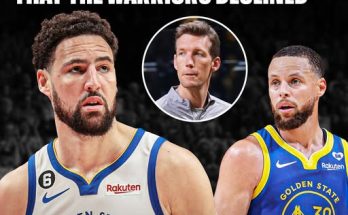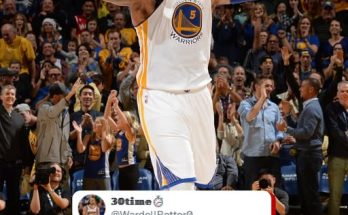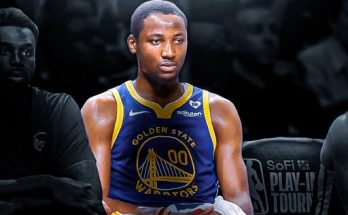The Chicago Bears have found themselves at a defining crossroads, one that could shift the direction of the franchise for the next decade. After years of revolving-door quarterback experiments and systemic instability, the franchise took a generational swing by drafting Caleb Williams with the No. 1 overall pick in the 2025 NFL Draft. With that decision came a burden of responsibility not just on the rookie phenom, but on the newly installed head coach, Ben Johnson, who arrived in Chicago already celebrated as one of football’s brightest offensive minds. From the moment Johnson took the job, insiders say he had one goal in mind: build a complete, robust, and quarterback-friendly ecosystem tailored to Caleb Williams’ rare blend of talent, creativity, and leadership. His blueprint, meticulously designed, is now being implemented with surgical precision, and the early takeaways are causing seismic shifts around Halas Hall and across the league.
Ben Johnson did not come to Chicago to be a caretaker. He came to create. The former Lions offensive coordinator—who was widely courted around the league for his innovative approach to scheme-building and quarterback development—was given full confidence by general manager Ryan Poles to reimagine the Bears’ offense from the ground up. Johnson immediately got to work, studying hours of Caleb’s film from USC and even going as far back as his high school tape to trace the full trajectory of his evolution. According to sources close to the team, Johnson kept a detailed scouting journal that focused on Williams’ tendencies under pressure, his comfort zone in play-action, and his decision-making when the play breaks down. But perhaps most importantly, Johnson made a deliberate choice to involve Williams in every step of the playbook design, believing that for a modern quarterback to truly thrive, his voice has to be more than just heard—it must be foundational.
At the Bears’ offseason program, it became immediately clear that Johnson’s system would not be a copy-and-paste version of his Detroit playbook. While there are echoes of his past success with Jared Goff—especially in the use of misdirection, layered route concepts, and vertical threats over the middle—Johnson has built an offense designed specifically to maximize Caleb Williams’ improvisational magic without turning him into a one-man show. That tightrope act is perhaps Johnson’s biggest challenge: building around a quarterback who thrives off-script while also enforcing the structural discipline of a professional offense. To that end, Johnson introduced “flex-structure” periods in practice, where the first five seconds of each rep are structured, but the remainder is left open for Williams to make instinctive decisions. These are tracked and graded separately from standard reps, with Johnson often reviewing them privately with Williams, encouraging reflection and growth.
Another striking feature of Johnson’s plan is how holistic it is. It doesn’t begin and end with play design. It extends into personnel usage, locker room leadership, even the cadence of team meetings. In the spring, Johnson pushed for the acquisition of veteran wide receiver Mike Evans, not just for his size and hands but for his experience mentoring young quarterbacks. Johnson reportedly told the front office that Evans’ presence would be “a lighthouse” for Caleb—someone who could read a room, stabilize huddles, and help enforce the internal culture Johnson is cultivating. That culture, by all accounts, is one of radical accountability mixed with relentless creativity. Coaches are encouraged to bring offbeat ideas to the table, and players have noted the more open and collaborative tone around team headquarters. Williams, for his part, has taken to it with the poise of a seasoned pro.
But this vision has not come without its skeptics. Around the league, some have questioned whether Johnson’s offensive ideals are too complex for a rookie quarterback, particularly one entering the NFL with the kind of pressure that Williams faces in Chicago. The Bears’ history at the quarterback position is notoriously barren, and expectations for Williams are sky-high. Some fear that trying to orchestrate a too-clever-by-half offense could stunt the development of the one player who could finally end the team’s signal-caller curse. Johnson, though, seems unfazed. In recent media appearances, he’s gone out of his way to stress that simplicity is embedded into the DNA of his scheme. He wants decision trees, not decision forests. He wants Caleb to think clearly, not cleverly. The coaching staff has designed color-coded reads, split-second option flows, and heavy use of motion to aid pre-snap recognition—tools meant to make Williams’ job easier, not harder.
One insider described Johnson’s relationship with Williams as “brotherly,” not in the sense of casual camaraderie, but in the intimate understanding of each other’s needs and flaws. Johnson reportedly spends more time with Williams than with any other player. They eat lunch together, review tape after hours, and Johnson even sat in on some of Caleb’s personal quarterback coaching sessions this offseason to better understand how to translate private mechanics work into team structure. This kind of proximity can be dangerous—some coaches have blurred lines too far—but Johnson appears to have struck a healthy balance, functioning both as mentor and technician.
The quarterback room itself has become a quiet laboratory under Johnson’s watch. Williams is flanked by experienced backup Tyrod Taylor, who serves as a cerebral veteran capable of offering quiet counsel, and undrafted rookie KJ Jefferson, who has impressed with his intelligence. Johnson uses these voices strategically. Taylor is often tasked with simulating defensive disguises during walk-throughs, while Jefferson is frequently paired with Williams during film sessions for fresh perspective. The idea is to generate layered feedback, not just top-down instruction. Williams has responded well, especially to Johnson’s habit of asking more questions than giving answers. It’s a Socratic method that challenges Williams to find the why behind every read.
In training camp, the results of this partnership have begun to show. Though the live reps are limited, Williams has already shown a more measured approach than he had during his final season at USC. He’s staying in the pocket longer, not bailing on protection prematurely, and communicating checks with increasing fluency. On one red zone series during 11-on-11s, Williams reportedly called a protection slide on his own after diagnosing a disguised nickel blitz, then hit tight end Cole Kmet in stride on a seam route. That kind of maturity has the Bears’ coaching staff cautiously optimistic—not because of the physical throw, but because of the mental processing required to make it.
It’s also worth noting that Johnson is pushing for organizational alignment in a way few Bears coaches have ever done. He meets weekly with Poles, offensive coordinator Tanner Engstrand, and quarterbacks coach Kerry Joseph to keep everything vertically integrated. Everyone in the building speaks the same football language now—something that hasn’t always been the case in Chicago’s historically disjointed leadership structures. Johnson wants every layer of the program to orbit around the quarterback, but not in a way that pampers Williams. Instead, he views Caleb as a high-IQ CEO who is still learning how to lead a billion-dollar operation.
Not every part of the plan is going to work perfectly. Johnson has acknowledged as much, often telling players that “the first version of a great idea is usually wrong.” But what sets Johnson apart is his flexibility. He’s not married to any single ideology. His offense has already shown signs of adaptive evolution. After watching Williams struggle in early OTAs with intermediate throws from under center, Johnson temporarily shelved certain packages, reintroducing them later with simplified footwork patterns and half-field reads. He treats Caleb less like a cog in a machine and more like an evolving variable within a dynamic system. That’s not just innovation—it’s stewardship.
Ultimately, Johnson’s plan isn’t to merely get Caleb Williams to survive his rookie season. It’s to unleash a quarterback who can dominate from Year One, grow through adversity, and eventually become the face of a franchise that has never had a true, sustained superstar at the position. The ambition is grand, the stakes are enormous, and the road is uncertain. But if the early signs are any indication, Johnson is doing something few Bears coaches have ever done—he’s building for the long-term while empowering the present. Caleb Williams isn’t just the future of the Bears. He’s the centerpiece of a revolution. And Ben Johnson isn’t just drawing up plays—he’s writing the next chapter of Chicago football history.



